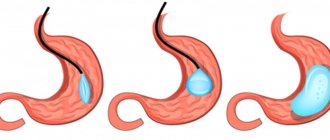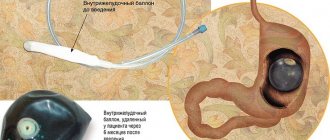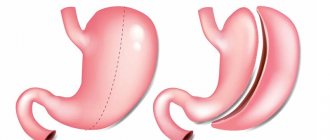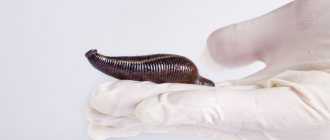An intragastric balloon is a silicone ball that is inserted into the patient's stomach. Subsequently, the balloon is filled with air or water and occupies a significant part of the stomach. Due to this, the patient can no longer take large amounts of food. Because when he tries to eat more than normal, he vomits. Thus, the number of calories consumed is reduced, which promotes weight loss.
The use of this method is designed for 6 months; this period allows the patient to form and consolidate the correct attitude towards nutrition and no longer return to old stereotypes.
The balloon is made of medical silicone, has thin walls and is lightweight. Its outer surface is absolutely smooth. The volume is 400-700 ml. By design, it can be air-filled or water-filled.
The intragastric balloon is inserted using flexible endoscopy. The procedure is endoscopic and technically as simple as inserting a gastric tube. The balloon is inserted under local anesthesia or general anesthesia.
Your browser does not support the video tag.
The period of use of the cylinder does not exceed 6 months. Because its walls become thinner over time under the influence of hydrochloric acid produced by the stomach and can be damaged. After 6 months, the balloon is removed, and if necessary to continue treatment, a new one is installed. To reduce stomach acidity while using the balloon, the patient is recommended to take omeprazole (one capsule per day).
The method of losing excess weight using an intragastric balloon has proven itself to be one of the most effective. With its help, patients on average get rid of 30% of excess body weight. In our practice, a record was registered: the maximum weight loss was 100 kg with the patient’s initial weight of 230 kg. Moreover, the method is quite simple to implement, has a minimum of side effects and in some cases becomes an alternative to surgery.
Technical description of the cylinder
The intragastric balloon is made of high quality medical silicone transparent rubber. It is made in the form of a ball with thin walls, has softness and elasticity. The surface of the cylinder is absolutely smooth. Its volume after filling the internal space ranges from 400 to 700 ml.
Air or water is used to fill the balloon. In the latter case, methylene blue is added to the water. Filling is carried out through a special valve. When filled, the balloon has a diameter of 12-15 cm.
The balloon is supplied deflated in a case and equipped with devices for inserting and inflating it. Factory packaging contains:
- The container is tightly rolled up and covered with a cover.
- A tube with a diameter of 6.5 mm inserted into the cylinder valve. Designed to inflate the balloon. Inside the tube has a wire guide, which provides rigidity and facilitates insertion of the balloon.
- Inflation system.
Collapsed intragastric balloon before insertion.
1. Rolled cylinder 2. Cover 3. Valve 4. Tube
Cylinder validity period
The cylinder is installed for a period of no more than 6 months. After this, it must be removed. If it is necessary to continue treatment using this technique, a new balloon is installed in the patient.
The validity of the balloon is limited due to the fact that it is exposed to hydrochloric acid, which is produced in the stomach. The walls of the cylinder are gradually destroyed by acid and if used for more than six months, its integrity will be compromised. Therefore, the period the balloon remains in the stomach should not exceed 6 months.
Indications for intragastric balloon installation
The indication for installation of an intragastric balloon is a BMI (body mass index) of 30 or higher. At high BMI values (from 50 and above), balloon installation is used as preparation for subsequent radical surgery if the patient has any restrictions for performing the operation immediately.
The main group of patients for whom a balloon is installed are those who have a BMI of 30-35. As a rule, they have already repeatedly used various methods for weight loss, but have not achieved the desired results. Many of them are ready to undergo surgery to place a ring on the stomach. But such an operation is performed only when the BMI value exceeds 35. Therefore, for patients with a BMI of 30-35, balloon installation is an available option.
The second group of patients are those who have a BMI of 50 or higher, but their current health condition does not allow surgery. Because there is a high anesthetic risk. After installing the balloon, the patient loses 30% of excess body weight, the health of such patients improves, and the risks associated with any surgical operation are reduced. Therefore, this technique is used, among other things, to prepare super-obese people for further radical bariatric surgeries, as well as various other surgeries (on joints, to remove hernias, etc.).
The third group consists of patients with a BMI of 40 and above who have severe diseases of the cardiovascular system. Due to illness, such patients will not be able to undergo surgery. For them, the introduction of an intragastric balloon becomes an alternative method of losing excess weight.
Removing the balloon
After 6-12 months, the balloon should be removed. The procedure lasts 30 minutes and is similar to a balloon installation procedure. You will be given a sedative before the balloon is removed. First, the liquid is sucked out of the balloon, then the empty balloon is removed.
Important to remember:
- You should not eat solid food 24 hours before the procedure.
- You should not drink liquids 12 hours before the procedure.
- Arrange to have someone take care of you at home when you return from the hospital.
Contraindications to the installation of an intragastric balloon
Like any other medical technique, the installation of an intragastric balloon has its contraindications. These include:
- The body mass index value is less than 30. The exception is cases where weight loss using a balloon will improve the course of the patient’s concomitant diseases.
- Previously undergone abdominal surgery.
- Previously undergone gynecological operations.
- Inflammatory diseases of the gastrointestinal tract (such as esophagitis, gastric and duodenal ulcers, Crohn's disease, malignant tumors of the stomach and others).
- The presence of potential sources of bleeding in the gastrointestinal tract (varicose veins of the esophagus and stomach, congenital and acquired telangiectasia, other congenital anomalies of the gastrointestinal tract, including atresia and stenosis).
- Large hiatal hernia.
- Strictures and diverticula of the pharynx and esophagus.
- The patient has other medical factors that make gastroscopy difficult.
- Mental disorders.
- The need to constantly take aspirin, anti-inflammatory drugs, steroids, stomach irritants, anticoagulants.
- Pregnancy or breastfeeding.
In addition, an intragastric balloon is not placed if the patient wishes to achieve only a cosmetic effect. However, he has no medical indications for weight loss.
Also, patients suffering from alcoholism or drug addiction, people with low self-discipline who are not able to follow the doctor’s recommendations, come to appointments in a timely manner for monitoring (2 times a month) and adhere to their diet will not be able to use the technique.
Materials and methods
- Between January and October 2012, 75 intragastric balloons were placed in obese patients.
- Informed consent was obtained from all participants included in the study.
- Two patients were excluded from the study because they underwent bariatric surgery after removal of their intragastric balloons.
- One patient was excluded due to pregnancy during the data collection period.
- Additionally, the researchers were unable to obtain data from one patient with whom they had lost contact.
- Another patient was excluded from the study because her intragastric balloon was removed prematurely due to withdrawal of consent and poor tolerability of treatment.
- A total of 70 patients were included in the study.
- Tables I and II show demographic parameters of the cohort, including sex, age, weight, height, body mass index (BMI), and obesity stage (according to the American Society of Metabolic and Bariatric Surgery).
- The vast majority of patients named physical unattractiveness,
- Obesity-related symptoms: joint pain,
- arterial hypertension,
- diabetes.
- reduction of abdominal hernia - 8 patients,
Intragastric balloon placement was not performed:
- patients with large (more than 4 cm) hiatal hernias,
- pregnant women,
- persons with gastric ulcer.
Intragastric balloon:
- was installed under general anesthesia and by the same endoscopic surgeon,
- the Orbera balloon was filled with saline to its mean volume (669 ± 25.8 cm3; range: 550-700 cm3),
- the amount of saline administered depended on the subjective assessment of gastric volume during endoscopic insufflation, as well as on the patient’s height.
- No dyes were used to detect saline leakage during treatment.
- Patients were discharged on the 1st day after the procedure.
- Discharge recommendations included: use of a proton pump inhibitor (Omeprazole) for several days,
- use of gastrointestinal motility stimulants (Cisapride) for several days,
- following a semi-liquid diet in the first week: frequent, split meals,
- Patients were instructed by a nutritionist who recommended that they consume 1100 kcal per day and increase physical activity.
- The intragastric balloon was removed after 6 months under general anesthesia.
- On the day of surgery, patients were prescribed a liquid diet.
- Patients were weighed, BMI and excess body weight were calculated.
- After balloon removal, patients were required to follow the same recommendations as before and also weigh themselves regularly.
- Patients were interviewed by telephone 2 years after removal of the intragastric balloon and provided information regarding their weight at that time.
Statistical analysis
Statistical analysis of the source data was performed using Excel 2010 (Microsoft), which made it possible to determine the mean values and standard deviation (±). T-test was used for comparison, values below 0.05 were found to be statistically significant.
Cylinder installation method
Intragastric balloon placement is an endoscopic procedure and is performed under gastroscopy guidance. It is carried out with complete anesthesia.
The patient is placed on his left side or back. The contents of the package with the BIB system (bariatric intragastric balloon) are laid out on the table. The case in which the cylinder is located is lubricated with a special gel. If the balloon is filled with water, then it is prepared in a container and methylene blue is added. This dye is necessary in order to promptly determine the depressurization of the cylinder (if damaged by rough bones, nut shells, etc.); if this happens, the urine takes on a blue color - the color of the dye - and this is a signal to remove the cylinder, which is in a reduced volume can pass further into the intestine and cause acute intestinal obstruction.
Before inserting the balloon, a gastroscopy is performed to determine whether the patient has any contraindications.
The balloon is inserted through the mouth. A syringe is connected to the catheter and the balloon is inflated through it, monitoring the process using vision. As the balloon inflates, the cover bursts and the balloon is released. When the entire volume of the balloon is filled (400-700 ml), the catheter is pulled out of it with a sharp movement. At the same time, the valve on the wall of the cylinder closes. The balloon itself takes the form of a ball, which is freely located in the stomach.
After this, the catheter along with the gastroscope is removed from the stomach. The procedure is completed.
What does the procedure look like?
An empty silicone ball is placed into the stomach using endoscopic equipment, into which a special physiological fluid (saline) is then pumped. The volume of the balloon is from 400 to 500 milliliters, depending on the initial volume of the patient’s stomach.
“Installation of an intragastric balloon is a non-invasive technique: not an operation, but a procedure,” says Dmitry Vladimirov, chief physician of the clinic. — It is performed without anesthesia; the person is in full health and consciousness, breathes on his own, his heart beats on his own. The load on the body is minimal, after the procedure a person can safely go home.”
Gastric ballooning: what is it?
Video: Elif clinic
Intragastric balloon is one of the effective methods of weight loss
The use of an intragastric balloon is one of the many techniques designed to combat excess weight. At the same time, installing a cylinder has its own indications and contraindications. So, this method is becoming increasingly popular. It helps to successfully reorient the patient towards rational eating and significantly reduce body weight. At the same time, under certain conditions it is impossible to use it.
In terms of effectiveness, treatment of obesity using an intragastric balloon occupies an intermediate place between conservative methods of treatment (diet, medications, etc.) and surgical methods (placing a ring on the stomach, bypass surgery).
The idea of using a balloon as a restrictive means when food enters the stomach appeared quite a long time ago. Many years of work on it have allowed us to obtain a high-quality and safe product that allows us to achieve good results.
The intragastric balloon is made of medical silicone rubber and has an absolutely smooth surface. Recently, many types of cylinders have been used (you can see in the section types of cylinders). The material used to make the cylinder does not have any harmful effects on the body. In addition, the device is elastic and easily takes the shape of the stomach, and is lightweight. Due to this, it does not cause any unpleasant sensations, does not disrupt the functioning of the digestive system and practically does not cause complications. It is also simple and easy to use, and its installation is more gentle compared to surgical operations.
Installation of a balloon is recommended primarily for patients whose body mass index is in the range of 30-35. In practice, patients with a balloon installed lose weight in the same way as if they had a ring installed. At the same time, the reduction in body weight with the balloon installed is within 40%, with the ring installed – 50%. Thus, the balloon method allows not only to combat obesity, but also to make predictions regarding possible weight loss for future surgery to install a ring on the stomach.
The principle of operation of the intragastric balloon. Position of the balloon in the stomach.
Intragastric Balloon (intragastric balloon).
Benefits of Gastric Ballooning
- It is performed without incisions - through the mouth and esophagus.
- Does not disrupt the physiology of the digestive tract and does not reduce the absorption of nutrients.
- Allows you to avoid relatively more severe bariatric surgeries, such as gastric suturing.
- The result of the procedure is based on natural reflex reactions and therefore does not require volitional efforts on the part of the patient.
- Aimed at normalizing eating behavior - a person gets used to eating in small portions.
- It is not accompanied by anesthetic and surgical risks.
- May be prescribed to patients with contraindications to bariatric surgery.
The disadvantage of this method is that ballooning may be less effective for weight loss compared to bariatric surgery.










